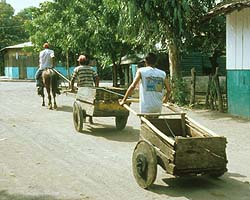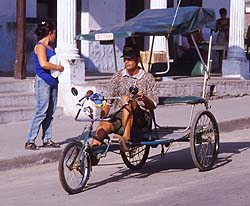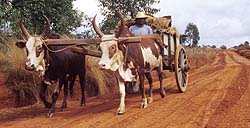| Within any country,
adoption of transport solutions is not homogenous. Some differences can be attributed to
variations in population density, incomes, cultures, topography, climate, farming systems,
transport needs and project influences. Motorcycles are found mainly in rich, high-density
areas, donkeys in dry zones and hills, while handcarts and wheelbarrows are most common in
urban and peri-urban areas. In other respects, the distribution of intermediate means of
transport appears random. This may be due to differences in human inventiveness,
entrepreneurial skills, personal preferences, fashions and simple 'chance'. Community
reaction to innovations is influenced by many social, cultural and economic factors, with
many 'random' or 'chaotic' chance elements. Hand carts used by fishermen in Nicaragua |
 |

